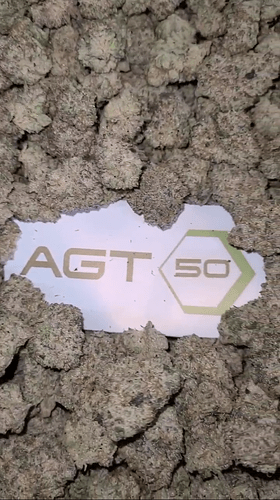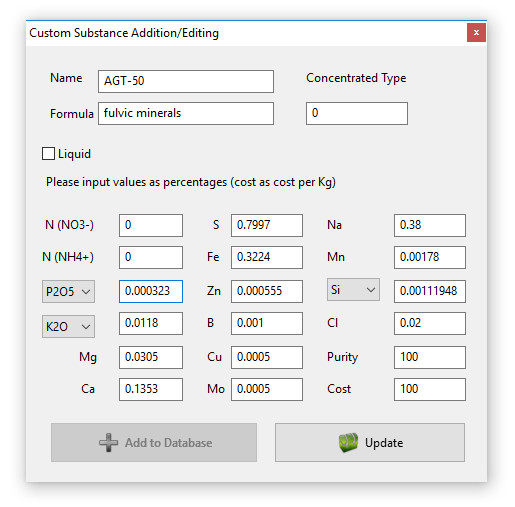Congrats!
All 3 kids and mamma looking good, congrats !!!
So i moved to a new facility for mushroom growing and when i switched over i didnt use agtonik (to reduce the amount of variables in the operation, to minimize fuck ups).
Ive been scratching my head trying to figure out why the grain bags are taking 3 or 4 days longer than usual.
Well i realized ive been using agtonik previously without questioning it since my first test, i saw slight improvement when i first tried it, so i stuck with it.
So i added agtonik back to the recipe and theres already a clear difference.
After a break and shake, the mycelium usually need about 24-36 hours to kinda catch its bearings and grow again. With the agtonik supplemented im seeing growth within 16-24 hrs of a break and shake, its not much of a difference, but still noticeable.
I highly recommend some agtonik for spawn production.
AGT-50 goes really far with mushroom cultivation- It’s 5-10ml/gallon of wet ingredients before pasteurization/sterilization. The fulvic and organic acids give cultures velocity. The carbon and amino content stores long-term nitrogen for better flushes.
That 8 hours is a big difference over the course of a year. Could easily be hundreds of hours saved.
At what point do you add agtonik? Soaking?
Yes, you are. Mr. Fulvic (Mr. Humic label for places that use CDFA testing, it’s all the same liquid) has been getting licensed in crazy places like Canada.
Mix up 5-10ml AGT-50 per gallon for wet ingredients. Soak/pasturize/sterilize. Enjoy super charged growing medium.
From a science perspective why isn’t agtonik effected by pasteurizing and sterilizing?
Humic acid is organic matter broken down. It is soluble at alkaline pH levels. Fulvic and other organic acids are completely broken down by low pressure, heat and time and are soluble at any pH levels.
Even if our fulvic acid goes through a convection oven, it retains the amino/organic acid and chelated mineral content at 350 degrees.
I do a no soak, no simmer technique, so i just add the agtonik to my water.
If the water is going into the bag, its get agtonik mixed in at 5ml/gal. I sometimes do 10ml/gallon for spawn, but i have kept the sub recipe to 5ml/gal
Agtonik is a nutrient complex, which arent affected tremendously by pasturization or sterilization.
Those two processes only affect the live bacteria/viruses/fungi. Agtonik isnt “alive” so there isnt anything to “kill”.
Thanks for knowing the science that goes into it! The carbon, fulvic and amino acids make it awesome for life once a culture like mycelium is introduced to it.
Fulvic Acid and Chelation
Fulvic acid is a naturally occurring organic compound that is present in soil, water, and plants. It acts as a chelating agent, which means that it can form complexes with metal ions and other charged molecules, including fertilizer ions like calcium, magnesium, iron, potassium and trace minerals.
When fulvic acid comes into contact with negatively charged fertilizer ions, it binds to them through a process known as chelation. The fulvic acid molecule has multiple sites where it can attach to the fertilizer ion, forming a complex that is more stable than the individual components.
The chelation process involves the formation of chemical bonds between the fulvic acid molecule and the fertilizer ion. Fulvic acid contains functional groups such as carboxyl, hydroxyl, and phenolic groups, which have a high affinity for metal ions and other charged species.
Once the fulvic acid binds to the fertilizer ion, it forms a stable complex that can be easily taken up by plants. This is because the complex is neutral or has a positive charge, which makes it more soluble in water and less likely to bind to other soil components.
In addition to chelating fertilizer ions, fulvic acid also helps to improve soil structure and fertility. It increases nutrient availability and uptake by plants, enhances microbial activity, and improves water-holding capacity. All of these factors contribute to a healthier and more productive growing environment.
My apologies if this has already been discussed but I couldn’t find it. I am making custom blend nutes from raw salts and bottling them at 250x concentration for use later on with sodium Benzoate preservative. Can I add agt-50 directly to my Part A (phosphates, potassium, micros) concentrate bottle to save myself from adding 1ml/gal from the agt-50 bottle each time? Or is there a reason to keep it separate until mixing up a batch for irrigation?
I have used dosimeters (Dosatrons and China knock offs) quite a bit. The trace elements are best on their own line so it can be mixed and cleaned easily. It is also suitable on the nitrate line. Always use nutrients within 5-7 days and clean your barrels and dosers between batches.
My title just changed to “Brand Ambassador” or “Chief Growth Officer” with AgTonik. I just totally duffed an order with a customer on a couple levels. We pulled out all the stops to try to make it right for him and I hope he sees that. When something wrong happens, it’s on me and I take full responsibility for AgTonik’s business. I was humbled this morning and hope you have an excellent Thursday.
I love you. ![]()
When I ran the hydro store, I always joked that we sold “broken hustler dreams”. My grandpa was a postmaster and nothing speaks more genuinely than a personalized message. I have sent quite a few hand written cards to customers that have gone out of business this year.
For the folks doubling down and hustling harder, AgTonik is there for you reducing your fertilizer and water usage.
Iron and micro content are the biggest addition with AGT-50 Fulvic Mineral Complex. There is roughly 0.8 ppm Fe per ml, but it is chelated and has 6+ types of iron (sulfate, humate, fulvate, Fe III IV, attached to aminos, etc.) It typically goes on it’s own dosimeter line or combined with nitrates.
EDIT: Our CSO said there is a typo on the sodium content. It should be 0.038. We use DI water, not sodium hydroxide for extraction just to clarify.
We are having the aminos analyzed right now to get more accurate numbers on the Nitrogen content
AgTonik (the dude) has always tried to hustle hard and make his own way in life. I wasn’t very good at marriage the first time I tried it, but we are stable and happy, and I’m happy willing to give it another go for a lady that I love very much. Too personal about someone you’ve never met? Oh well . . .
AgTonik (the company) goes out of our way for everyone, especially the great connections that we have made on Future 4200. We genuinely appreciate everyone here. We really want to be your fulvic, amino and organic acid supplier of choice for your cannabis operations.
AgTonik (the dude) has written hundreds of useful comments here that made my dumb smarter. Always willing to help and learn together with others finding time for everyone.
AgTonik (the company) even though I’m still unable to get in my neck of woods from all the members here and comments it’s one of the best additives one could ask for.
Wishing all the best, one love.





